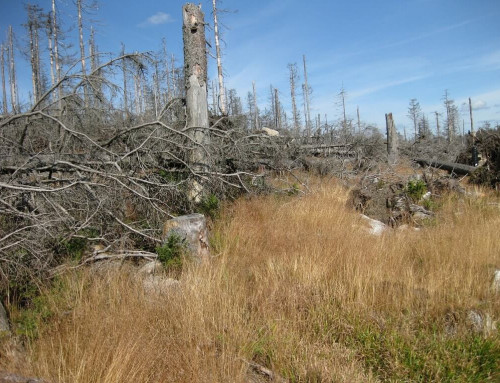
Laminar Flow. Image credit gjhikes.com
ZIMSEC O Level Geography Notes
- The following factors affect the river’s energy and ability to erode, transport and deposit its load.
- Type of flow, gradient of channel, volume/discharge, cross-sectional channel shape, channel roughness.
Type of flow

Laminar and Turbulent flow. Image credit Thepaper.cn
- When water flows downhill under gravity it follows the path of least resistance.
- There are two patterns of flow: laminar and turbulent.
- Laminar-is a horizontal movement of water in a river with minimal vertical mixing.
- The water is in layer, such a form of flow would result in minimal erosion and more deposition
- In reality such a type of flow does not exist although something close to this can be observed in flat terrain when rivers are relatively calm during their flow.
- Turbulent flow-consists of a series of vertical and horizontal eddies and a lot of vertical mixing of the water as it flows downhill.
- Turbulent flow results in more erosion and transportation and this form of flow increases with an increase in a river’s energy.
Gradient of the channel
- The gradient of the channel determines a river’s ability to erode, transport and deposit its load.
- The upper course of a river is associated with steep gradients therefore a lot of velocity and energy and therefore river erosion and transportation takes place in the upper course.
- The middle and lower course have a much gentler gradient and therefore the slower moving waters have less erosive power and therefore more deposition takes place and less transportation and erosion.
Discharge/Volume
- As already said, water flows in response to the pull of gravity which is also determined by the mass and in turn the volume of the moving water.
- Rivers have less water in the upper course because of most have fewer tributaries at this stage therefore they have less energy to erode.
- Middle course and lower course river sections have higher volumes of water since they have more upstream tributaries at this stage resulting in more energy to transport and erode and transport in terms of water volume.
Cross Sectional Channel shape.

Channel cross-section: A has less energy due to friction
- Channel A has a larger wetted perimeter which means more friction and leaves less energy to erode its bed and to transport load.
- Channel B has a smaller a smaller wetted perimeter resulting in more vertical erosion because it has more energy left over from overcoming friction.
- In terms of channel cross section upper course streams have more energy to erode when compared to lower and middle course streams.
Channel Roughness

Channel roughness channel A) is typical in the upper course streams and B) in the lower course streams
- Upper course streams encounter more friction due to their rough channels which are a result of protruding boulders and rocky outlines. This means such channels will have less energy left over to erode and transport their load.
- Middle and Lower course streams have more energy to transport and erode since they have smooth channels resulting in less friction.
Conclusion
- More erosion takes place in the middle course since the channels are smooth, the gradient steeper than in the lower course, the wetted perimeter smaller than in the lower course and the volume of water is high.
- A lot of vertical erosion takes place in the upper course.
- Most deposition takes place in the lower course of the river since the gradient is smaller, the wetted perimeter larger, and the gradient considerably less steep when compared to the other two courses.
NB It is important to remember that this is a generalised approach since erosion, deposition and transportation can take place in any part of the course due to various circumstances regardless of the course of the river.
To learn more about the various courses/sections of a river/stream click here.
To access more topics go to the Geography Notes page.



